Future events: Exhibition - Alchemy of Knowledge. Transdisciplinary Entanglements of Artificial Biology, Robotics and Art
Alchemy of Knowledge - Transdisciplinary Entanglements of Artificial Biology, Robotics, and Art
Place: aqb Project Space
Exhibition opening: May 12. 16:00 CET
Facebook link- https://fb.me/e/CgaLkhc2
An exhibition of multimedial works of art, science and engineering, created by the multidisciplinary students of the ABRA (Artificial Biology, Robotics and Art) project.
The exhibition features the collaborative works of the students, faculty and experts who had worked jointly across the fields of science, technology, art, design, and cultures. The exhibition also showcases the methods and practices of higher education that were researched and tested during the ABRA project. These works narrate how we may bridge the art and science for enhanced sustainability and renewal of education.
Exhibiting artists / installations:
Daniel Szalai - Algorithmic Alchemy of Cows
Competitive market conditions, growing world population, and the harmful ecological impact of cattle farming put breeders and farmers under unprecedented pressure to increase their cows' efficiency and productivity while reducing their ecological footprint. For decades, these efforts have been supported by professional performance evaluation systems that parameterise cows and quantify their value using a formula. Today, geneticists and breeders increasingly rely on data science in pursuing these goals and work with computerised mating programs to define their breeding strategies. Drawing on genomic information derived from genetic evaluations and obtained from advanced farm management solutions employing computer vision and machine learning, these programs handle the genomic matrix of tens of thousands of sires and hundreds of millions of cows to find the best possible match according to a set of priorities.
How will the cow of the future look like if their evolution is to be controlled entirely by algorithms and managed according to a selection principle that prioritises cows' compatibility with the technological infrastructure and their efficiency in serving economic goals? The work Cow Alchemy uses scientific tools to give an artistic reflection on this issue and raise questions about humankind’s relationship to nature and technology. Following a speculative attitude, it projects various evolutionary trajectories of cows using GANs (Generative Adversarial Networks) trained on thousands of images of Holstein Friesian cattle obtained from sire directories and semen catalogues.
The resulting imagery oscillates between realistic representations, uncanny, distorted creatures, and fragmented, occasionally even abstract visuals - between idealistic images, science-fiction visions and mystical imagination. The ever-evolving visuals are presented on a holographic LED fan; a device that not only refers to the disembodiment and virtualisation but also evokes the giant air conditioning fans at the dairy farms and thus associates global temperature rising.
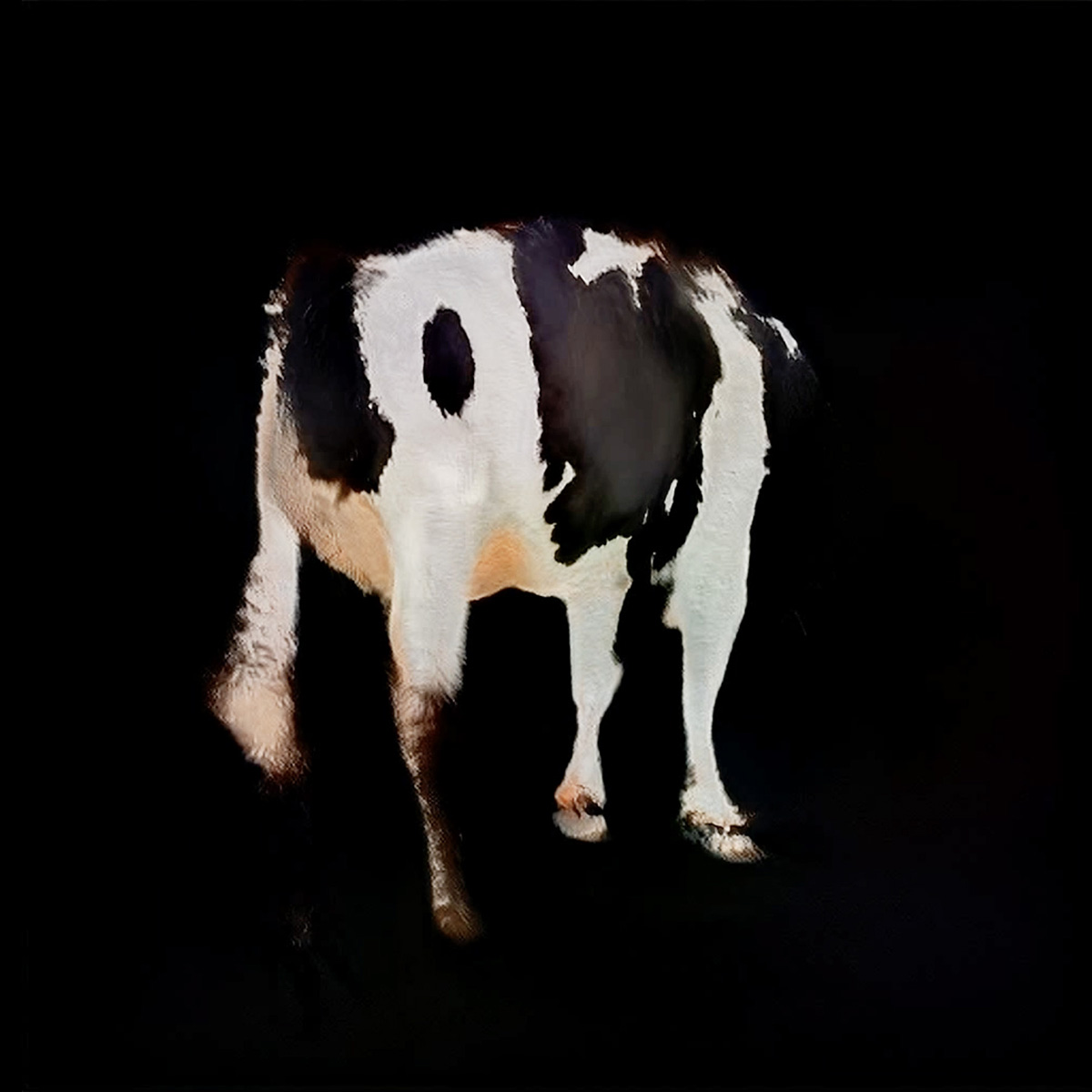
Image: Daniel Szalai - Algorithmic Alchemy of Cows
Renata Dezso - Co-Ability / Aberrant behaviour in system aesthetic
My work with ABRA challenges binary thinking and advocate for concepts that embrace complexity. Through an exploration of the co-Ability phenomenon, I highlight how a complex network is more than the sum of its parts. Through a transdisciplinary design exploration, I use 3D-printed tangible prototypes as a medium to engage with philosophical discussions that challenge Western thinking and therefore the concept of binary oppositions. My work exemplifies a “Trans-Disciplinary” approach that integrates art, design, science, and technology as equal partners in a decentralised creative process.
Rather than focusing solely on creating a final design product for problem-solving in soft robotics, my intention is to employ a problem-seeking method. This approach allows the design process to generate new ideas, taking into account the diversity and complexity of real-world experiences. In contrast to object-oriented approaches, problem-seeking in this project involves the development of partial micro-solutions reflected in prototypes that challenge systems-oriented settings, considering the temporality of materials, movements, and changes.
Working with digital technology has been an exploratory endeavour shaped by the influence of time and progress. The objects I create through material fabrication are intended to reflect and provoke thoughts on relationships within soft networks while emphasising aesthetics that are culturally relevant, technically advanced, and visually captivating.

Image: Renata Dezso - Co-Ability / Aberrant behaviour in system aesthetic
Aska Mayer, Johanna Møberg Lauritzen - Estroextract - Speculative protocols on care and contamination of (human) bodies of water
Yearly, 113.000 kg of estrogenic hormones are released into the environment by humans and livestock, contaminating entire bodies of water and the surrounding earth. With these rapidly increasing concentrations in soil and water all over the world, we can’t avoid being shaped by those hormones.
While these omnipresent estrogens are concealed in our surroundings, the selected distribution of the same components within institutional “healthcare” is subject to heavy gatekeeping and is used as a mechanism for control and repression. Access to hormone-based medical procedures is a process of passing arbitrary artificial obstacles to receive care, which should be perceived as a necessity. That is, if the care is even available or accessible at all. Taking this contamination and control of estrogens as a starting point, we imagine an alternative approach to hormone-based healthcare:
We desire to define a chemical protocol that can transform hormone pollution, which is harmful for the natural environment, into necessary treatment of human bodies. We envision this protocol offering new possibilities for those seeking estrogen-based medical care, who are currently unable to access it through institutional healthcare systems. Furthermore, we hope that the protocol can help facilitate and inspire the growth of community-based healthcare, giving people the right to care for their own bodies, on their own terms, surrounded by familiar, mutually caring individuals.
Combining imaginative practices with scientific research, Estroextract takes the shape of a speculative experimental setup for a future utilization of estrogenic contamination within small-scale communities. This information is conveyed through speculative blueprints for a bioreactor and other materials needed for extracting estrogens from wastewater, as well as a sample of the desired estrogen hydrogel product. Accompanying this, is a video explaining the motivation and hopes of the project, water samples collected from multiple locations in Europe, and posters displaying these locations.
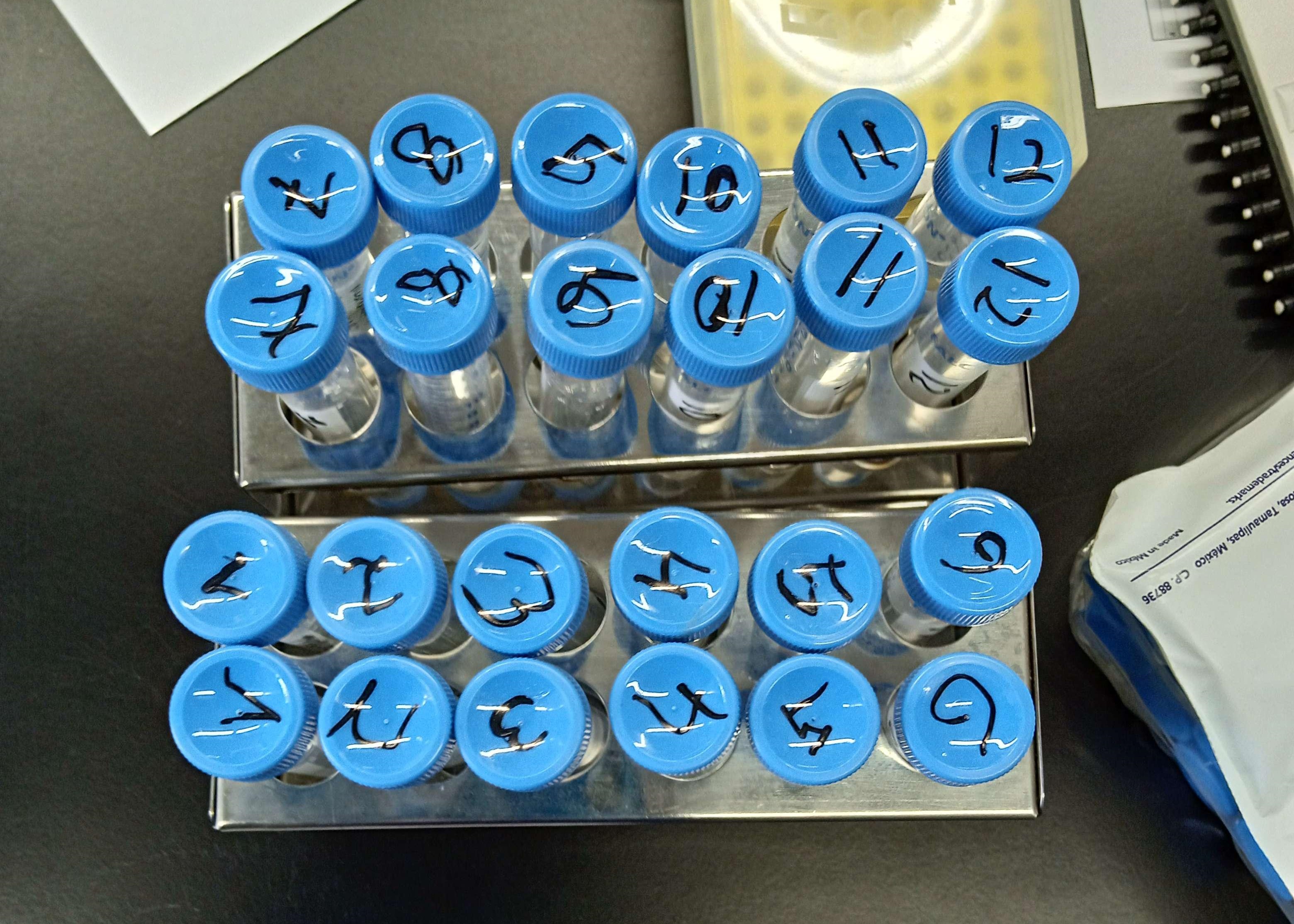
Image: Aska Mayer, Johanna Møberg Lauritzen - Estroextract - Speculative protocols on care and contamination of (human) bodies of water
Katri Naukkarinen, Aurora Del Rio, Markus Löchtefeld - Decay Cyphers
The work Decay Cyphers is realized as part of the collaborative speculative Atomic Kinship research project, with the aim of re-visioning radioactivity as a deity. With this intent, the project revisits an idea that has been already proposed by scientists and researchers in relation to the construction of a repository for nuclear waste in Yucca Mountain, USA: that of a cult of radioactivity, but later abandoned.
The Atomic Kinship is re-appropriating this idea, considering that the first repository of this kind is currently being built in Finland where they both reside. The project proposes to reconsider the idea of a cult of radioactivity as a way of transmitting warning messages into the deep future, while challenging the human- and male-centric views often dominating the discourse of radioactive inheritance. With this aim, the Atomic Kinship project develops through producing systematic attempts at decoding messages from radioactivity, and interpreting them in various ways. These attempts include performative and ritualistic practices, installations, and other forms of artworks.
Decay Cyphers focuses on research around materials affected by the Chernobyl fallout in Finland. Gathered material, such as different cuts from game, as well as nordic pike and certain fungi, such as Lactarius and Hydnoid, that are known to accumulate fallout materials, are being cremated by the artists, and the resulting ashes measured for their radioactivity. The work presents a designed algorithm caught in the attempt to decode messages from the ashes: an attempt that could, within this exhibition, result as successful. Decay Cyphers plays with the space of potentiality in-between ‘failure’ and ‘miracle’ in considering the expectations about finding or not finding a message, the idea of serendipitous discoveries, and all the wishes and hopes that society directs towards technologies.
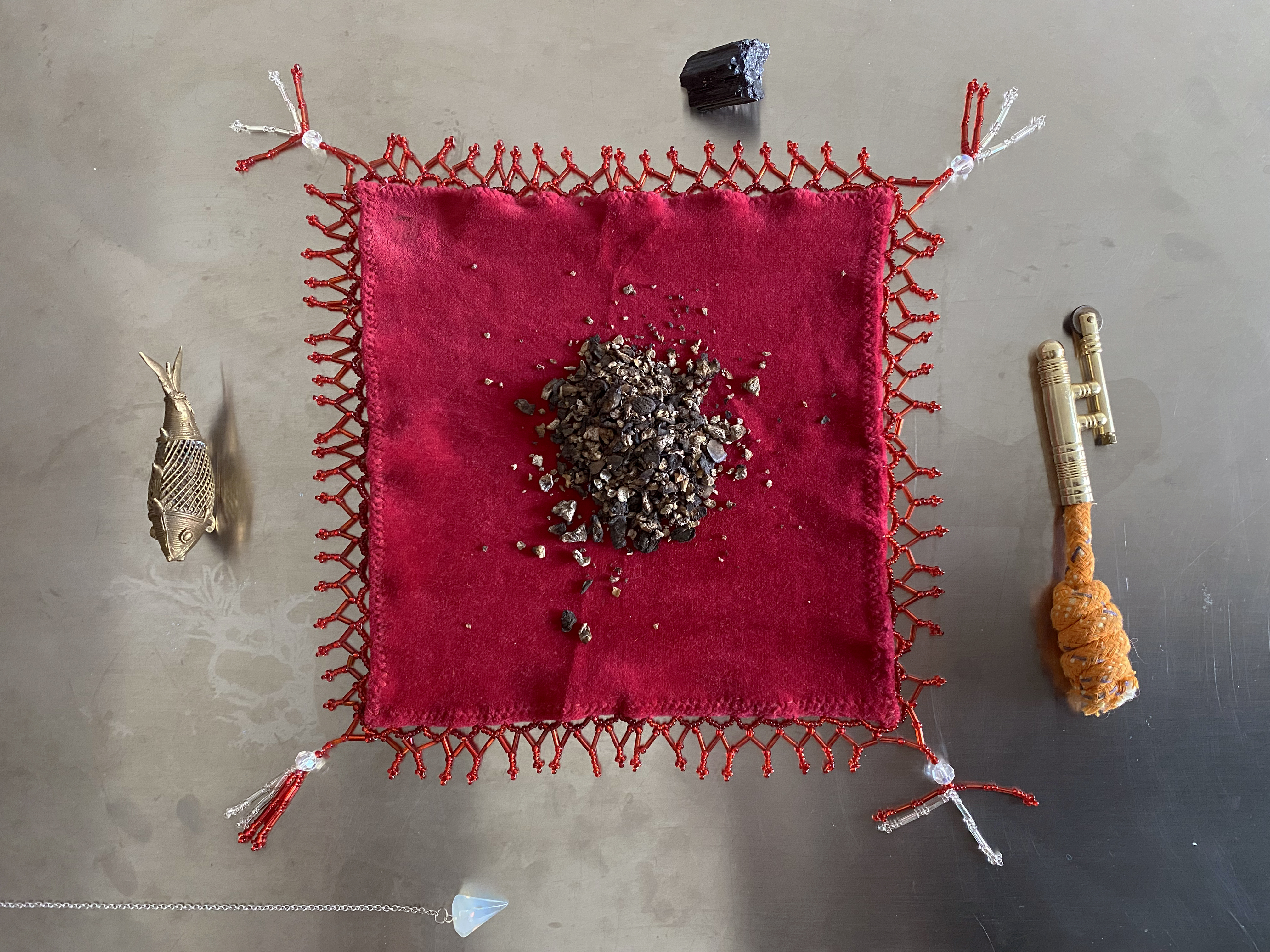
Image: Katri Naukkarinen, Aurora Del Rio, Markus Löchtefeld - Decay Cyphers
Edit Blaumann, Marija Sumarac, Sólja Holm Mortensen - Rabarba
Rabarba is an exploration in the field of speculative design presented through a spatial sound installation. Rabarba, a network of European Maker communities, has created an innovative solution that involves the use of soft robotic sand worms, known as Wÿrms. In this future world, the primary focus of the economy is on recovery and addressing the consequences of the twentieth century. However, there is a lack of large-scale, coordinated efforts to safeguard the global environment, resulting in patchwork solutions to combat the impact of climate change, of which Rabarba has developed a unique approach to tackling drought, the Wÿrms.
These tiny robots have been designed to protect underground water reserves by utilising sensors, hosted by the local communities, to monitor the moisture content of soil and other environmental factors. Orchestrated by AI, the Wÿrms use algorithms fine-tuned by local hackers to locate areas with high water retention potential and create small underground reservoirs to store water for later use. By biomimicking the branch structures found in nature, Wÿrms help redistribute water during periods of low rainfall.
The world of Rabarba offers a fascinating glimpse into what the future could hold, where humans and machines can coexist inspired by nature and empowered by technology. This techno-organic world where power is no longer concentrated in centralised institutions, but rather in smaller, more agile actors that operate on a local level.
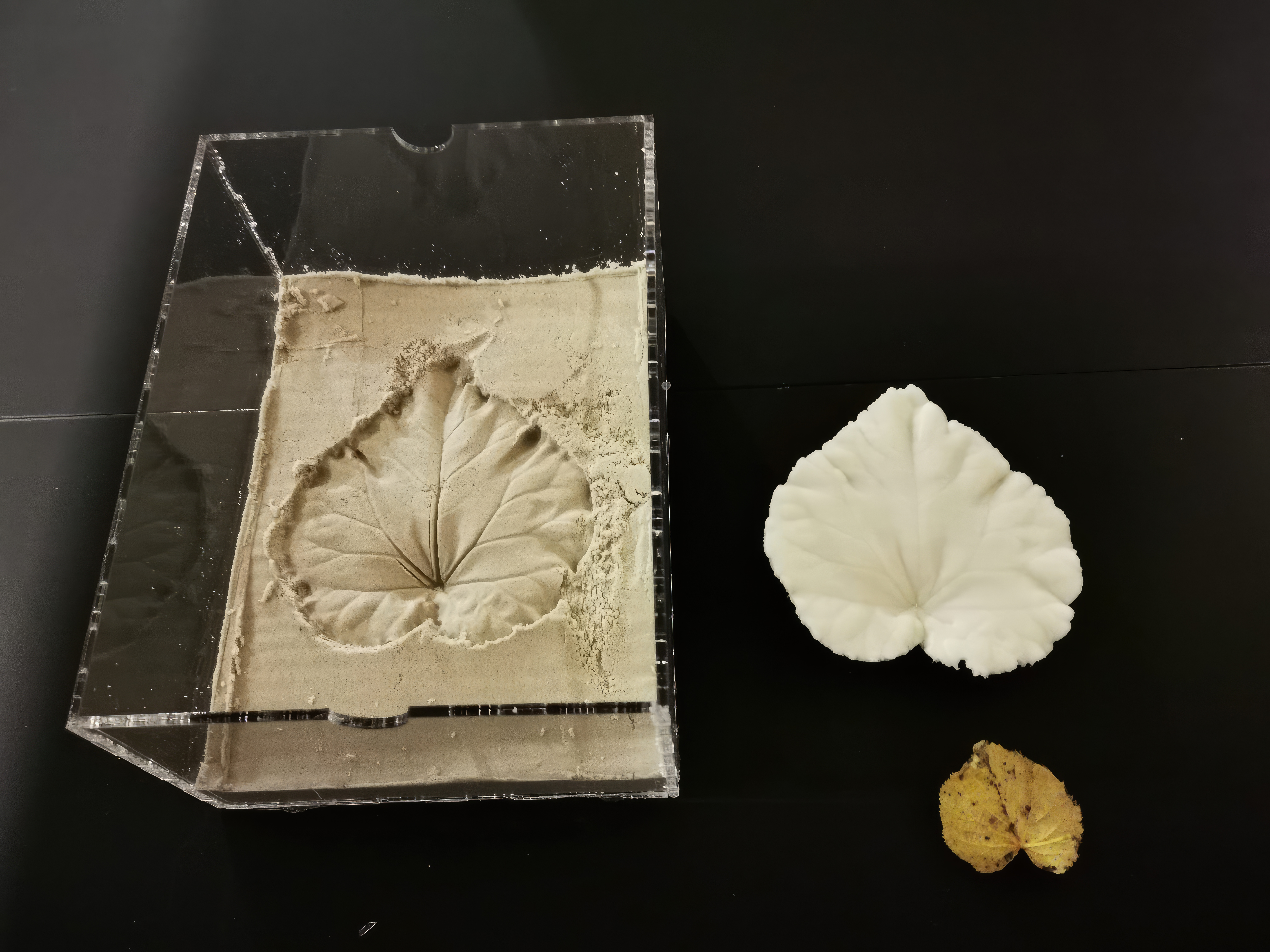
Image: Edit Blaumann, Marija Sumarac, Sólja Holm Mortensen - Rabarba
Maros Pekarik, Andrea Tesanovic - Molecular Theatre performance
“Molecular Theatre” is an art-science project that explores the fascinating world of protocells – cell-like entities which allow for life-like behavior to spontaneously emerge from non-living chemicals. Through the fusion of scientific inquiry and artistic expression, the project aims to create a unique sensory experience by giving voice to non-living agents of synthetic biology through generative soundscapes. These soundscapes are derived from the behaviors of protocells as they interact with each other and with their environment and serve as a window into the inner workings of these mysterious structures. The opening of the exhibition at the Art Quarter Budapest will feature a live collaboration between artists and protocells, as they come together to generate a one-of-a-kind sound piece followed by a permanent installation showcasing the experiments and the soundscapes generated by the protocells.
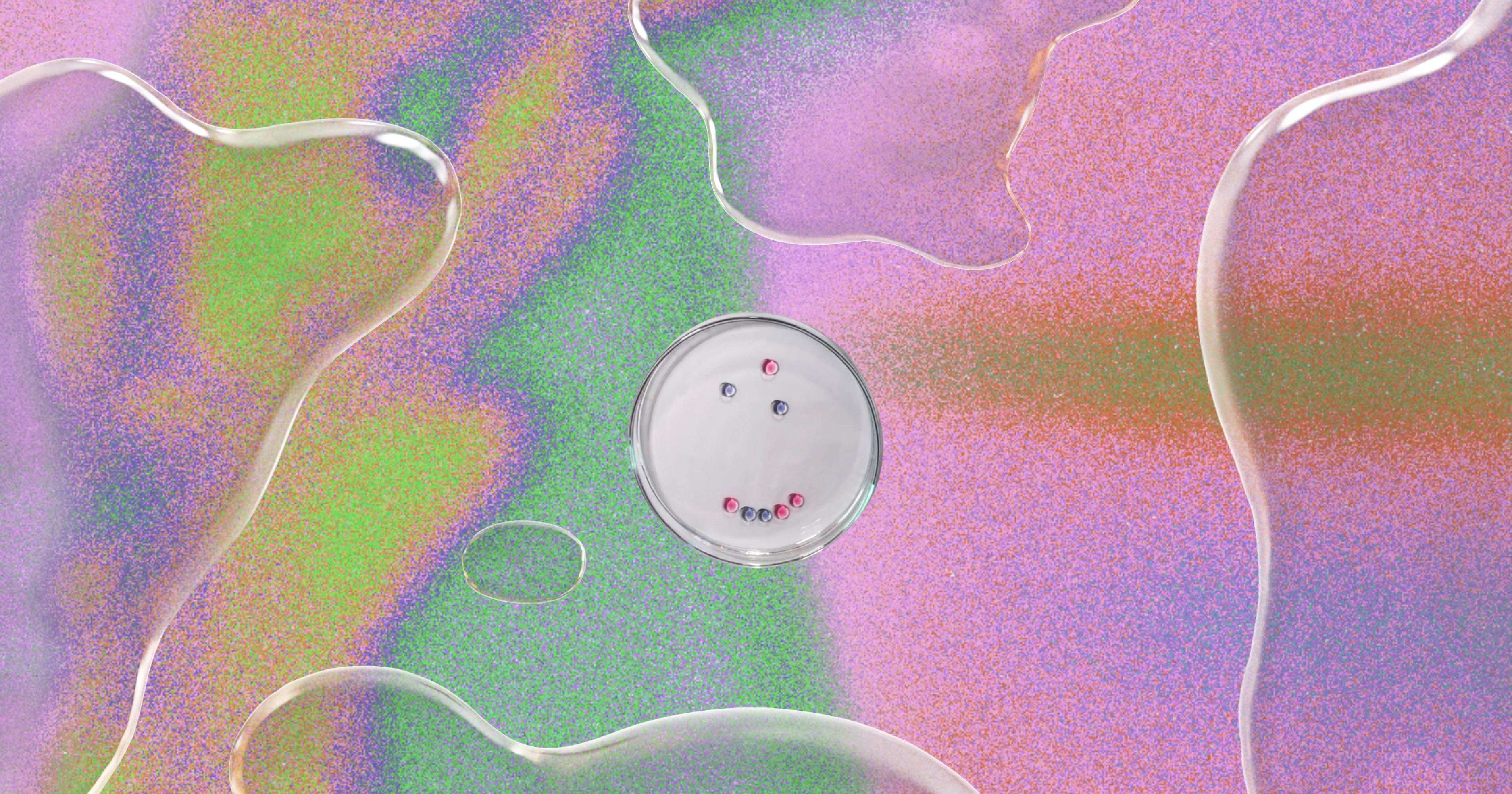
Image: Maros Pekarik, Andrea Tesanovic - Molecular Theatre performance
Hege Tapio - EMPATH, True Emotional Intelligence, artificial or not, comes from embodied knowledge
The project is connected with my Phd research and exploreshow we might envision possible and speculative convergences of machine technology and human bodies, with focus on the areas involving emotions, sensing and empathy.
The continuous development towards measuring our biometry is delivering an added layer of digital information that might become a useful and needed feature as we assemble AI with robotic and virtual humanlike entities. As our fascination with artificial intelligence wears off we gradually also might become even more aware of our embodied qualities. Of how our bodies are capable of detecting, perceiving, interpreting and communicating information, a kind of information that is hard to classify in words or intellectual formats. The fleeting feelings, sensations, gut-feelings, emotions….the fabric that both makes us come to aliveness and that weaves us together as social beings.
Inspired by the Cyborg concept, the blending of machine and the human, my artistic project sought out to create an Empath. My interest in the concept of Cyborg has however been to find a narrative looking at how we as humans might differ from machines or how we find ways adapting our bodies to machines. Some of the questions that has been following me through my research is : “why do we want machines with emotions”? and “can a machine ever replicate/simulate human emotions?”
This is where the concept of the Empath comes in, the cultural references of Empaths is of highly sensitive persons that are able to perceive, understand or even share the feelings of another person without direct communication by mouth.
The project has evolved into a performance where a Cyborg figure is approaching the audience. The figure is dressed in a silicone suit with embedded technology making use of EMG signals triggering sound-levels and soft robotics to visualize “sensing organs” or presenting non-human features. Embedded are also hidden sensors that picks up the pulse/heartbeat of the figure, and another sensor that is able to sense the pulse/heartbeat from selected audiences. By inviting in the audience into this slightly uncomfortable environment I am hoping to create some ambivalence between the unsettling atmosphere and the unfamiliar figure that is trying to connect emotionally.
